| Nothosauridae | |
|---|---|
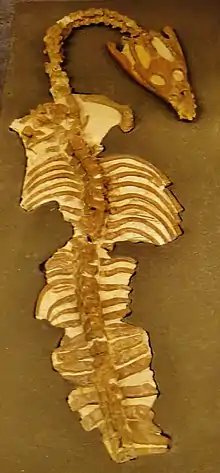 | |
| Nothosaurus mirabilis fossil | |
| Scientific classification | |
| Domain: | Eukaryota |
| Kingdom: | Animalia |
| Phylum: | Chordata |
| Class: | Reptilia |
| Superorder: | †Sauropterygia |
| Order: | †Nothosauroidea |
| Suborder: | †Nothosauria |
| Family: | †Nothosauridae Seeley, 1889 |
| Genera[1] | |
| |

Nothosauridae are an extinct family of carnivorous aquatic sauropterygian reptiles from the Triassic time period of China, France, Germany, Israel, Italy, Netherlands, Russia, Switzerland, and northern Africa.[2][3]
Phylogeny
The cladogram shown below follows Rieppel (1998)'s phylogenetic analysis of nothosaurids (bold terminal taxa contain living species).[1] Most of these relations are still considered correct today,[4] but despite Rieppel (1998)'s referral of Ceresiosaurus and Silvestrosaurus to Lariosaurus, some authors still consider them separate and many additional species have been named since this analysis.[5]
| ||||||||||||||||||||||||||||||||||||||||||||||||||||||||||||||||||||||||||||||||||||||||||||||||||||||||||||||||||||||||||||
A species level phylogenetic analysis of Nothosauridae was performed by Liu et al. (2014), and included all known valid species of the family apart from Lariosaurus stensioi (type of Micronothosaurus), Nothosaurus cymatosauroides, and Ceresiosaurus lanzi. The resultant topology is similar to the one obtained in Rieppel (1998) if the new additions are ignored, however this analysis found both Lariosaurus and Nothosaurus to be polyphyletic in regard to each-other and all other genera of the family, making a systematic revision of these two genera necessary. Below, their results are shown with type species of named nothosaurid genera noted.[6]
| ||||||||||||||||||||||||||||||||||||||||||||||||||||||||||||||||||||||||||||||||||||||||||||||||||||||||||||||||||||||
See also
References
- 1 2 Olivier Rieppel (1998). "The status of the sauropterygian reptile genera Ceresiosaurus, Lariosaurus, and Silvestrosaurus from the Middle Triassic of Europe". Fieldiana: Geology. New Series. 38: 1–46.
- 1 2 3 The Paleobiology Database: Nothosauridae
- ↑ Nothosauridae
- ↑ Lee, M. S. Y. (2013). "Turtle origins: Insights from phylogenetic retrofitting and molecular scaffolds". Journal of Evolutionary Biology. 26 (12): 2729–2738. doi:10.1111/jeb.12268. PMID 24256520.
- ↑ Jasmina Hugi (October 2011). "The long bone histology of Ceresiosaurus (Sauropterygia, Reptilia) in comparison to other eosauropterygians from the Middle Triassic of Monte San Giorgio (Switzerland/Italy)" (PDF). Swiss Journal of Palaeontology. 130 (2): 297–306. doi:10.1007/s13358-011-0023-6. S2CID 128688930.
- ↑ Jun Liu; Shi-xue Hu; Olivier Rieppel; Da-yong Jiang; Michael J. Benton; Neil P. Kelley; Jonathan C. Aitchison; Chang-yong Zhou; Wen Wen; Jin-yuan Huang; Tao Xie; Tao Lv (2014). "A gigantic nothosaur (Reptilia: Sauropterygia) from the Middle Triassic of SW China and its implication for the Triassic biotic recovery". Scientific Reports. 4: Article number 7142. Bibcode:2014NatSR...4E7142L. doi:10.1038/srep07142. PMC 4245812. PMID 25429609.
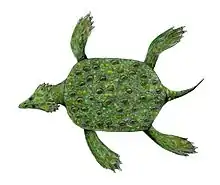
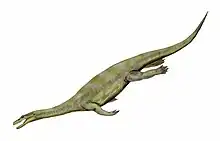
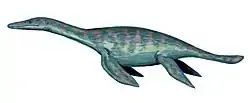

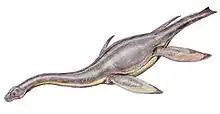
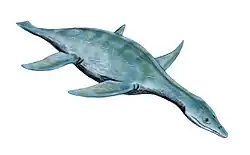
.png.webp)